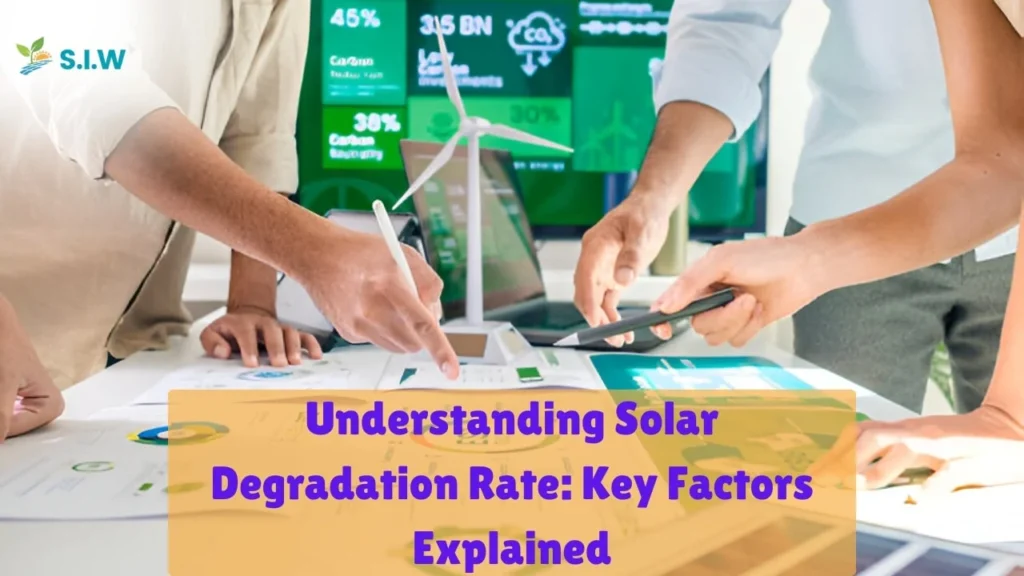Solar degradation refers to the gradual decline in the performance of solar panels over time. It’s natural for solar panels to lose efficiency as they age, which affects their ability to convert sunlight into electricity. The term “solar degradation rate” specifically describes how quickly this loss happens. Typically, solar panels degrade at an average rate of about 0.5% to 1% per year, meaning that after 25 years, a panel might still be operating at around 80-90% of its original efficiency.
Why Do Solar Panels Degrade?
Solar panels degrade for several reasons. The primary cause is exposure to environmental factors like sunlight, temperature fluctuations, and moisture. Just like any other material exposed to the elements, the materials inside the panels wear down over time.
In addition to the weather, solar panels can experience microcracks, which are tiny fractures in the silicon cells that make up the panel. These cracks reduce the panel’s ability to capture sunlight and convert it into usable energy. Other factors include corrosion of the metal components and degradation of the protective layers around the solar cells.
Personal Experience with Solar Panels
When I first installed solar panels on my home a decade ago, I was amazed by how efficiently they worked. However, after about five years, I noticed that they weren’t producing as much electricity as they once did. I learned that this is completely normal due to the natural degradation rate of solar panels. Over time, the amount of electricity they produce will decrease slightly, but the panels still work well and continue to save me money on energy bills.
Factors Affecting Solar Degradation
- Material Quality: The quality of the materials used in solar panels significantly impacts how fast they degrade. Higher-quality panels generally degrade more slowly than cheaper alternatives.
- Weather Conditions: Solar panels in regions with extreme temperatures, frequent storms, or high humidity tend to degrade faster than those in more stable environments.
- Installation: Proper installation plays a crucial role in reducing solar degradation. If panels are installed at the wrong angle or are not securely fastened, they may be more vulnerable to damage.
- Maintenance: Regular maintenance, such as cleaning and inspecting panels, can help reduce the rate of degradation by preventing dirt buildup and addressing any small issues before they become larger problems.
How to Minimize Solar Degradation Rate
Choose High-Quality Panels
Selecting high-quality solar panels is one of the best ways to reduce the impact of degradation. Top manufacturers often offer warranties guaranteeing that their panels will perform at a high efficiency for at least 25 years. Companies like SunPower and LG have been known to produce panels with a degradation rate as low as 0.3% per year, much lower than the industry average.
Proper Installation and Orientation
To get the most out of your solar panels, make sure they are installed correctly. Panels should be angled to face the sun as much as possible throughout the day. In the northern hemisphere, that typically means facing south. Also, ensure that there’s no shading from trees or buildings that could reduce the amount of sunlight your panels receive.
Regular Maintenance
While solar panels are designed to be low-maintenance, it’s still important to keep them clean and free from debris. Dirty panels can lose up to 15% of their efficiency. Having your panels checked by a professional every few years can also help catch any potential problems early and prevent them from escalating.
Real-World Example of Solar Panel Degradation
In a study conducted by the National Renewable Energy Laboratory (NREL), researchers found that solar panels degrade at an average rate of 0.5% per year. This means that after 20 years, most panels are still working at 90% of their original capacity. The study also noted that panels in harsher climates tend to degrade faster, but the overall trend remains fairly consistent.
For expert guidance on understanding the Solar Degradation Rate, don’t hesitate and get a quote. We’re here to help you make the best choice for your system’s longevity and efficiency
FAQs
1. How long do solar panels last?
Solar panels typically last 25 to 30 years, though they continue to produce electricity after that time at a reduced efficiency due to degradation.
2. Can solar degradation be reversed?
No, solar degradation is a natural process that can’t be reversed. However, with proper care and maintenance, you can slow the rate at which it occurs.
3. How much efficiency do solar panels lose each year?
On average, solar panels lose about 0.5% to 1% of their efficiency each year.
4. Do solar panels degrade faster in hot climates?
Yes, solar panels tend to degrade more quickly in regions with extreme heat, as high temperatures can cause wear on the materials used in the panels.
5. Is it worth investing in solar panels with a low degradation rate?
Yes, panels with a lower degradation rate will produce more electricity over their lifetime, making them a better long-term investment.








